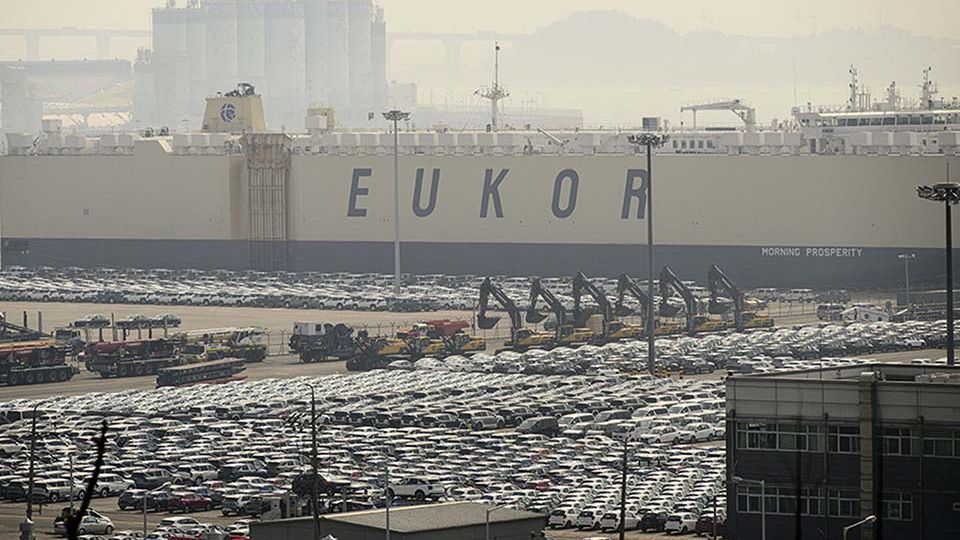April 23, 2025
SEOUL – South Korea’s trade data for the first 20 days of April offers a sobering glimpse into the unfolding impact of the Trump administration’s aggressive tariff policies. The figures underscore the urgent need for Seoul to recalibrate its economic strategy to buffer against what could become a prolonged external shock.
According to the Korea Customs Service, exports during the April 1-20 period fell to $33.9 billion, marking a 5.2 percent decline from the same period a year earlier. Imports also dipped 11.8 percent to $34 billion, meaning Korea again recorded a slight trade deficit.
Particularly concerning is the steep drop in exports to the United States, which plunged 14.3 percent. Shipments to China, South Korea’s top trading partner, slipped 3.4 percent. That dual contraction from the country’s two largest markets presents a formidable challenge to an economy that remains heavily reliant on foreign trade.
While it’s too early to determine whether this downward trajectory will persist through the end of the month, the early signs are troubling. They suggest that South Korea’s once-reliable export engine is beginning to sputter under the weight of intensifying global trade tensions.
At the center of these tensions is Washington’s shift toward protectionism. President Donald Trump has introduced sweeping tariffs, including a 10 percent blanket duty on all imports and targeted 25 percent levies on steel, aluminum and automobiles. These measures have already begun to disrupt South Korea’s trade flows, and more volatility lies ahead.
The Trump administration has temporarily delayed country-specific “reciprocal” tariffs for 90 days, prompting a scramble among US trading partners for more favorable terms. South Korea, meanwhile, faces the looming threat of new tariffs on semiconductors — its most valuable export. Depending on how these trade policies evolve, the impact on Korean exporters could intensify significantly.
April’s trade snapshot should be viewed not as a routine data point, but as a critical early warning. Without swift, strategic action, South Korea may find itself facing an economic reckoning more severe than previously anticipated.
Of the country’s top 10 export items, only semiconductors showed resilience, recording a 10.7 percent year-on-year increase. The rest revealed a grim landscape: Home appliances dropped 30 percent, computer components declined 23 percent, petroleum products fell 22 percent and automobile exports sank 6.5 percent.
The broader context is no less alarming. Exports accounted for a staggering 95 percent of South Korea’s economic growth last year. In effect, the country’s economy turns on a single axis. And the escalating US-China tariff conflict threatens to knock that axis off center.
What South Korea needs now is a second axis — robust domestic demand. A recent report by the Hyundai Economic Research Institute echoed this view, warning that without a rebound in consumer and business spending, the nation could slide into an “L-shaped” recession: a prolonged period of stagnation without a clear path to recovery.
This urgency is compounded by mounting external pressures. The Trump administration is expected to press Seoul to reduce its trade surplus with the United States, while intensifying pressure on other issues like defense cost-sharing. Meanwhile, the deepening rift between Washington and Beijing adds further instability to the global trade landscape.
To navigate this uncertainty, South Korea must pursue a dual strategy. First, the country needs to diversify export markets beyond the United States and China. Tapping into emerging economies in Southeast Asia, the Middle East and Latin America could provide crucial buffers. Second, South Korea must bolster industries relatively insulated from geopolitical risk, such as shipbuilding and defense, and elevate them as long-term growth pillars.
The early-April decline in exports is more than a temporary setback — it is a signal flare. Policymakers must act decisively to stimulate domestic demand and shore up the country’s economy ahead of greater trade disruptions.


